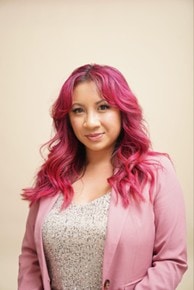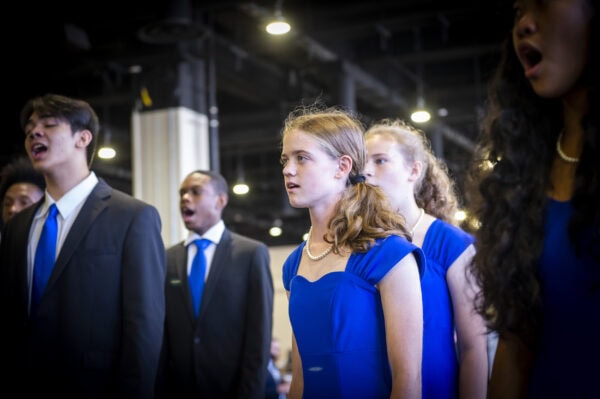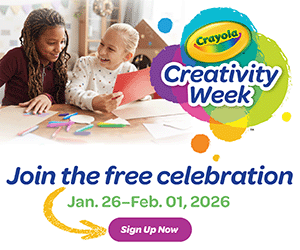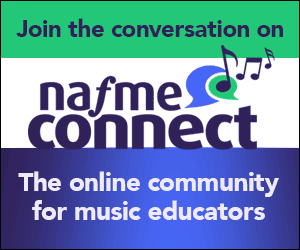/ News Posts / Reframing and Reimagining Choir Festival Repertoire
Reframing and Reimagining Choir Festival Repertoire
Thoughts Going beyond Traditional Adjudicated Performances
By Darlene Machacon
This article originally appeared in Tactus, spring/summer issue (2025). Permission to reprint is granted by the Western Region American Choral Directors Association.
In my first year teaching at my current high school, a few senior students inquired if we might participate in a local regional festival. I looked up at our wall with years of plaques, ranging from excellent to superior ratings. I decided not to participate in adjudicated festivals for the first two years at my school, not because I didn’t think the group could obtain such a rating; the rating itself was an expectation and tradition for the sake of having another plaque. I had to ask myself, “If students are in choir to win an award, it’s time to re-evaluate.”
At the beginning of my teaching career, I did not understand why I found festivals to be quite intimidating. Now, I hear teachers refer to them as learning opportunities or ways to showcase their choir’s “musical excellence.” This leads me to question whose definition of excellence they are referring to and to what extent that standard is based on Eurocentric classical practices and conductor-led performances.
While I am doing everything I can to recruit and retain students in the choir program, I’m also working toward what feels like the “pinnacle” of our music learning for the entire school year—our festival set. That’s when I realized why festivals felt so intimidating before: The choir festival set appears to be the ultimate goal of a choir’s musical education for the school year. How do these few pieces become an unspoken reflection of our entire choir program?
When I attend high school choir festivals, I often notice that the programs strive for a specific kind of diversity. It’s the kind of diversity that still fits neatly within traditional choir norms. A set might include Palestrina alongside a Russian folk song, or a gospel arrangement mixed in with choral staples.
These festival programs sometimes feel disjointed because they read more like a checklist of diverse selections rather than a thoughtfully curated musical experience. As music educators, choral conductors, and facilitators, we have the opportunity to do more than just teach high-quality music; we can shape meaningful, intentional programs that reflect a broader range of voices and experiences.
I ask myself these questions when choosing festival repertoire:
- Whose music am I featuring?
- Am I including composers and arrangers from historically marginalized communities?
- If a piece is in another language, is the composer or arranger from that culture? Who receives royalties for this work?
- What stories and lessons can this repertoire bring to my students?
After repertoire selection I also consider:
- How can students be directly involved in preparing these pieces?
- Is the learning process entirely conductor-centered, or do students have a say in musical decisions?
- Does this repertoire create opportunities for student creativity and input?
What if we approached programming from a more intentional, intersectional, student-centered perspective—one that amplifies underrepresented voices and empowers student agency? It’s about curating repertoire that tells a meaningful, cohesive story—one that challenges, engages, and truly resonates with both student performers and student/teacher audiences. Storytelling with messages such as:
- Nostalgia through the eyes of Gen Z
- Reclaiming identities through traditional and cultural folk songs
As a fellow secondary choir director, we prioritize the following elements when selecting festival repertoire for the year: voicing, musical variety, style, difficulty level . . . maybe even its “wow” factor. All of these are important and valid considerations—but I challenge us to take it a step further. In addition to those factors, we could consider:
- Cultural connections to our students
- Music’s emotional impact through storytelling
- A diverse range of composer and arranger voices
At the start of the school year, I lay the foundations of vocal technique, music theory, and ensemble skills. I also gradually empower my students to take ownership of their own musical learning. Last year’s festival set was centered on identity and community. The singers began with the world premiere of a Vietnamese piece composed by Julianne Nguyen called, “Về Nghe Mẹ Ru” (published through F-flat Books), based on traditional lullabies passed down orally for generations. Since many of my students identify as Vietnamese or Vietnamese-American, I saw their eyes glisten with excitement when I shared that we would be learning this piece. Emergent bilingual students helped their non-Vietnamese-speaking peers with the nuances of southern and northern dialect pronunciation, and a few students took the initiative to create choreography involving traditional fans and bamboo hats, connecting to the song’s historical and cultural context.
We closed our set with “Kruhay” by Beny F. Castillon, a Kinaray-a piece from the Visayan islands in the Philippines. This piece tells the story of a folktale of the Bornean people who escaped the dictatorship and forged a barter agreement with the indigenous Ati group of Panay Island. My students held discussions on our unique stories and the importance of expressing empathy to ensure all people find a sense of belonging. They also took ownership of crafting movements to represent elements of the story—from the balangays (boats) to the sparkle of the kulintas (necklace). As a Filipina-American, I was able to share how this story exemplifies bayanihan (the spirit of unity and cooperation), and the students saw the connection to how we foster a sense of community within our choir.
The themes of identity and community were present in our preparation, progress, and performance. Festival programming has the potential to reflect the core values of our choral program. I believe festival themes can go beyond a one-time musical experience—they can serve as reflections of our singers’ character.
I will admit, it takes careful research and planning to ensure authenticity and to provide enough time for students to truly engage with and reflect on the music. I believe it is worth it. When students invest their emotional energy and connection into music, it is heard in their performance. I always tell my students, “If your audience doesn’t understand the heart of our music, then we haven’t accomplished our purpose as musical storytellers. A festival rating doesn’t matter if we aren’t reaching peoples’ hearts.” Questions to help reframe how we, as conductors, plan festival music include:
- How are our values evident at the start of the school year? For classroom teachers, how are these values displayed on our walls and whiteboards? Do our walls celebrate plaques more than people? Are our first two weeks of lessons intentional in reflecting those values? How do the community-building activities we choose align with our goals? How do we model those values in our scaffolding, instructional strategies, and in training of student leaders?
- How do we understand social issues that matter to our students? How can we use our programming to inspire them to develop their own themes? How do we partner with other clubs and curricular activities on campus to foster community, rather than existing as an isolated performing arts class?
- How much of our music selection is shaped by our own personal nostalgia and preferences, influenced by our Eurocentric classical training? How often are we the center of attention, the primary sculptors of sound? How do we train our singers to be conductor-less? How do we empower our students to take on leadership roles as conductors of one another?
If festival sets can shift to emphasize community, the purpose of music-making, I also wonder if the festivals themselves can reconsider their approach—rethinking their rubrics and ratings. Instead of simply presenting back-to-back performances from each school, what if we allowed students to introduce their chosen festival theme, provide an overview of the pieces, and explain what those pieces mean to them personally? Imagine how much more engaged and invested the audience would be in the storytelling of our music if we took the time to prepare and share those deeper connections.
Now, let’s talk about rubrics. While many festivals still focus on the standard categories like diction, musicianship, and tone, I believe there is room for a broader, more reflective approach. What if festivals included categories like:
- Theme/Purpose: How well is the theme or purpose of the set uniquely and clearly expressed through the repertoire? Is student understanding of the theme evident in the performance?
- Musical Variety: Does the set showcase a diverse range of genres, not limited to Euroclassical styles? This could include pop a cappella, Broadway, rock, R&B, or other contemporary styles. Is there a demonstrated authenticity in each musical approach?
What about variety in adjudicators? There is so much to be learned from the perspectives of singer-songwriters who work as session singers or background vocalists, or from musical theater soloists who understand the craft of performing on a big stage. What if we could hear them perform as well? While clinics offer a chance to work directly with adjudicators, I believe students can form a deeper musical connection when they hear the music-making from the very person giving them feedback.
Traditional festivals often emphasize one type of choral singing and performance, overlooking a wide range of music that students enjoy beyond our classroom walls. Let’s celebrate the diverse ways singing is done throughout our communities, rather than compartmentalizing into outdated categories. By embracing a broader perspective, we can create festivals that not only reflect the true diversity of musical expression, but also honor the rich experiences and identities of the students involved. Let’s make our festivals a platform for growth, understanding, and authentic musical exchange—where every voice, style, and story has the safe space to be heard and affirmed.
This year, I decided to send my students to the same regional choral festival those senior students asked about years ago. We received a plaque and added it to the wall which now also reads “Community > Competition”.
About the author:
 Darlene Machacon (she/her) is a Filipina-American music educator and content creator based in Orange County, California. She currently teaches high school choir, piano, and AP Music Theory. Darlene holds a Master’s in Music Education from VanderCook College of Music, two Bachelor’s degrees in Music Education and Piano Performance from Biola University, and is pursuing her doctorate at William Carey University. She teaches Culturally Responsive SEL at VanderCook’s MECA program and presents nationally on SEL, equity, and culturally responsive teaching. She contributes her expertise to organizations such as ACDA, NAMM Foundation, and F-Flat Books. A 2022 CMA Foundation Music Teacher of Excellence, Darlene is also the 2025 California Choral Directors Association Choral Equity Scholarship recipient and a 2026 Grammy Music Educator Award quarterfinalist. As the creator behind @TheDarlingMusicTeacher on TikTok and Instagram, she engages thousands with content that promotes inclusive, student-centered music education. When not immersed in the world of music education, Darlene enjoys living life with her husband, Josh, and their Siberian husky, Kobe.
Darlene Machacon (she/her) is a Filipina-American music educator and content creator based in Orange County, California. She currently teaches high school choir, piano, and AP Music Theory. Darlene holds a Master’s in Music Education from VanderCook College of Music, two Bachelor’s degrees in Music Education and Piano Performance from Biola University, and is pursuing her doctorate at William Carey University. She teaches Culturally Responsive SEL at VanderCook’s MECA program and presents nationally on SEL, equity, and culturally responsive teaching. She contributes her expertise to organizations such as ACDA, NAMM Foundation, and F-Flat Books. A 2022 CMA Foundation Music Teacher of Excellence, Darlene is also the 2025 California Choral Directors Association Choral Equity Scholarship recipient and a 2026 Grammy Music Educator Award quarterfinalist. As the creator behind @TheDarlingMusicTeacher on TikTok and Instagram, she engages thousands with content that promotes inclusive, student-centered music education. When not immersed in the world of music education, Darlene enjoys living life with her husband, Josh, and their Siberian husky, Kobe.
Did this blog spur new ideas for your music program? Share them on Connect! Interested in reprinting this article? Please review the reprint guidelines.
The National Association for Music Education (NAfME) provides a number of forums for the sharing of information and opinion, including blogs and postings on our website, articles and columns in our magazines and journals, and postings to our Connect member portal. Unless specifically noted, the views expressed in these media do not necessarily represent the policy or views of the Association, its officers, or its employees.
Published Date
November 4, 2025
Category
- Culturally Relevant Teaching
- Culture
- Diversity, Equity, Inclusion, and Access (DEIA)
- Ensembles
- Repertoire
- Representation
Copyright
November 4, 2025. © National Association for Music Education (NAfME.org)






